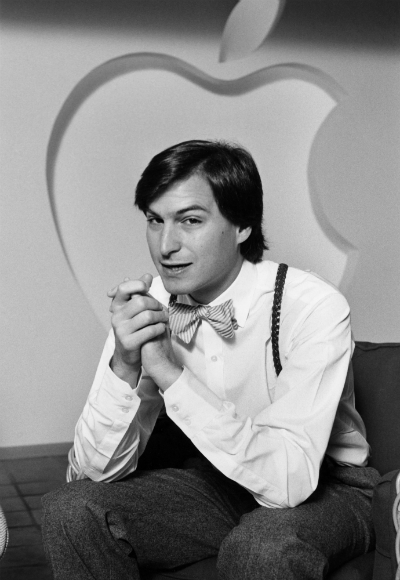
According to Steve Jobs, during a 1985 interview with Playboy Magazine, we were “...just in the beginning stages of what will be a truly remarkable breakthrough for most people -- as remarkable as the telephone.”.
By all accounts, Jobs was right, as Apple was preparing to tackle the most important technological revolution to hit consumers, since the mass-commercialization of television sets and the portable transistor radio.
In hindsight, it’s hard to believe the effort Jobs had to make to sell the future of modern computing to Playboy’s David Sheff, whose arguments would be found extraordinarily antiquated and out of touch, even a mere decade later, and yet delightfully “retro-nerd”, to at least some future hipsters, such as the argument Sheff made as to why computer users who were already more than happy using a keyboard driven interface, should adopt the mouse as well, or as the inventor of the mouse himself, Douglas C. Engelbart called an “...X-Y position indicator for a display system.” in 1967.
Jobs response was candid as it represented the very core of Apple’s business model, based on absolute simplicity.
"If I want to tell you there is a spot on your shirt, I'm not going to do it linguistically: 'There's a spot on your shirt 14 centimeters down from the collar and three centimeters to the left of your button.'" Jobs explained to Sheff, "If you have a spot—'There!' [he pointed]—I'll point to it. Pointing is a metaphor we all know.”
Thirty-four (34) years later, the mouse has not only peaked as the preferred way to interact with most graphical operating systems, it is now on the brink of going out of style, thanks to alternative methods, once though as awkward and inaccurate, like the ancestor of the modern Apple Magic Trackpad, the “X-Y mutual capacitance touchscreen”, developed by CERN in 1977, from an even older design, dating back to 1972 by Danish electronics engineer Bent Stumpe, originally meant to be integrated in the control room at CERN’s particle accelerator supercollider.
The mouse has also gone through its own evolutionary stages, initially meant to carry the mouse cursor to its destination by means of pushing the device itself into position, to his more accurate but not much more sophisticated cousin, the “trackball”, which took the original paradigm, and quite literally, flipped it on its head, by placing the ball on top, and the housing at the bottom, to serve as a stationary base.
The “invention” of the trackball has indeed extended the lifetime and purpose of the mouse by a few decades, but the accuracy of touch interfaces has now reached its apex, and consumers have elected touch interfaces as the best kind, by overwhelming majority, considering the staggering sales numbers of the iPhone and iPad alone over the years.
Still, Apple has chosen to continue to manufacture the Apple Magic Mouse for the time being, due to large numbers of Mac users who are still used to operating their Macs through pushing a plastic puck across their desks.
If that weren’t enough, stylus pens have contributed to an even greater leverage of alternative pointing devices, by providing far more dimension to the experience, with the addition of pressure-sensitive interfaces that react in different ways to how hard a touchscreen is pushed, and how long, which now makes it very difficult to tell the difference between a doodle drawn on a piece of paper with a common graphite pencil, and a printed sheet of paper with a doodle executed using Apple Pencil on any number of creative apps.
With that said, it’s not over, as “voice” operated interfaces have already entered the race to put the dear old mouse to rest. Apple Siri, Microsoft Cortana, and Google, not to mention the plethora of smart devices listening to our every whim, at home and in our cars, are indeed shifting the mindset of consumers, in regard to what it means to interact with computers, and what a computer really is.
In 2020, Apple is rumored to announce a radically updated Apple Mac Pro, a machine that is meant to satisfy the requirements of creative professionals. While many designers, engineers and video production artists are known to like using the mouse, specialized interfaces like Apple Magic Trackball and Apple Pencil have carving a niche that is widening every day, and the need to more refined methods to use specialized software, like Photoshop, Illustrator and AutoCAD, is growing.
This could mean that Apple might begin to consider the inclusion of atypical interfaces, like trackballs, and Apple Pencil/Mac integration. By any stretch of the imagination, it’s impossible to predict what Apple will do, especially with KGI Securities no longer providing us with Ming-Chi Kuo’s epic insights, but it is clear that the mouse is beginning its downward spiral, as better, more accurate and sophisticated interfaces gain traction among consumers.